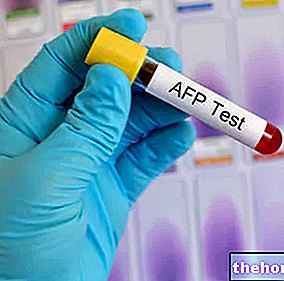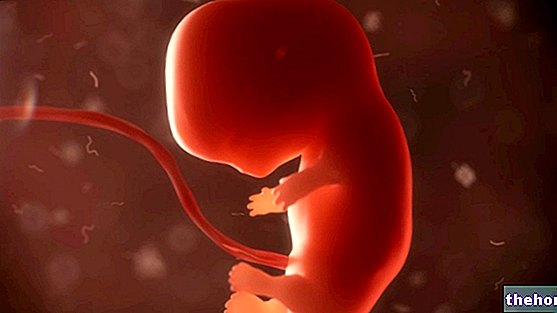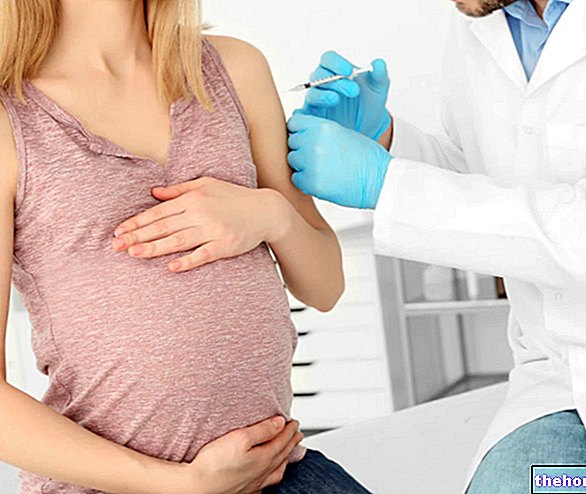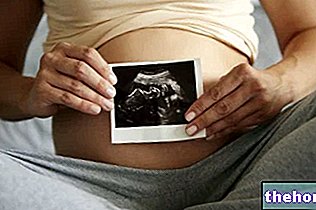CVS is an invasive diagnostic technique based on the aspiration of chorionic villi under ultrasound control and on subsequent laboratory analysis of the aspirated tissue.
The diagnostic rationale for CVS lies in the same cellular origin of fetus and chorionic villi, both derived from the zygote (cell resulting from the fusion between oocyte and sperm). Consequently, the chromosomes of the chorionic villi are the same contained in fetal cells, and their study allows to diagnose chromosomal abnormalities of the fetus (including Down syndrome) and various genetic diseases (cystic fibrosis, fragile X syndrome, deafness ); upon request, the villocentesis also allows to establish the paternity of the fetus.
The chromosomal analysis (cytogenetic examination) allows to identify numerical and structural anomalies of the chromosomes, while the genetic analysis (molecular examination) allows to highlight any defective genes.

Villocentesis: how to do it
Villocentesis consists in the removal, via the abdominal or vagino-cervical route, of a small quantity of chorionic villi (microscopic ramifications that form the outermost part of the placenta).
In transabdominal CVS, after having identified the most suitable point, the surrounding skin is sterilized. The chorionic sample is then aspirated under continuous ultrasound guidance, through an 18-20 gauge needle made to penetrate through the abdominal and uterine wall, until it reaches the trophoblast (where the chorionic villi are located).

Between the two operative modalities, in most cases the choice falls on the transabdominal CVS.The decision may, however, vary based on what is evidenced by the preliminary ultrasound examination, performed to establish the gestational period (measurement of the length of the fetus and biometry of the skull), but also to assess the degree of vitality of the fetus (measurement of the heartbeat ) and its location. Furthermore, the preliminary ultrasound examination allows to discover any multiple pregnancies, evaluate the quantity of amniotic fluid, the position of the uterus and study the uterine site on which the placenta has been inserted. All these elements will be used by the doctor to establish the best way of access for the sampling of the chorionic villus.
During the preliminary ultrasound examination, it will also be possible to highlight any temporary or absolute contraindications to CVS (uterine anomalies, myomas, etc.).
After one hour from the end of the examination, a further ultrasound check is carried out to evaluate the viability of the fetus.
What are the risks of the procedure, is CVS painful?
Chorionic villus sampling is performed in an outpatient clinic and does not require anesthesia or special medical care. When the needle is inserted through the abdomen and uterus, the woman may complain of a stabbing pain, however mild and of short duration, followed by small cramps due to localized contractions of the uterine muscles. pain is a purely subjective fact, most patients describe CVS as a painless investigation. More than the pain itself, most women are therefore concerned about the small risk of abortion associated with the procedure. Transabdominal CVS is in fact burdened by a risk of fetal loss that can be quantified in one case every 100-200 examinations.This risk is in addition to that of spontaneous abortion which exists between the tenth and twelfth week, therefore completely independent of the villocentesis or other diagnostic procedures. This risk, estimated in 2-3 cases out of 100, is significantly associated with maternal age, and significantly increases after 35 years of age. For what has been said, the probabilities of fetal loss attributable to the execution of the CVS are difficult to interpret; all this, together with the progressive improvement of diagnostic techniques and the safety of the procedure, explains the presence in the literature of rather different percentages of abortion risk (yes ranges from 0.5 to 3%).
The risk of miscarriage increases significantly when the procedure is performed transcervically (2-3%), and even more so if the biopsy forceps are used instead of the flexible catheter. Numerous other factors can affect the rate of fetal loss; the risk decreases with "increasing" gestational age (therefore a too early examination is very risky), and the degree of experience and skill of the operator, while it increases with "increasing" maternal age, in the presence of placental mosaicism and in case of multiple needle injections (sometimes, albeit rarely (about 1% of cases), it is necessary to repeat the puncture and aspiration due to insufficient material taken; in the very rare cases of further failure, an amniocentesis is usually scheduled for 2-4 weeks after).
After the villocentesis, in a variable percentage from 2 to 6% of cases, in the hours following the collection the pregnant woman complains of transient disturbances, such as cramps in the uterus and a slight blood loss from the genitals; this event, within certain limits, should not scare the woman, since it is not statistically correlated with abortion. More rarely, symptoms such as fever, pains and even chills may arise, all symptoms which - like any significant bleeding - must be promptly submitted to medical attention.
To avoid phenomena of maternal-fetal incompatibility, with consequent haemolytic disease of the newborn, in non-immunized Rh negative pregnant women with a Rh positive partner, a prophylaxis with anti-D immunoglobulins must be performed (for further information: Coombs test in pregnancy). the woman is already immunized, the execution of the CVS is contraindicated.
What to do before and after CVS?
During the preparation for the exam, no particular advice is normally given; however, it is recommended to moderate the consumption of food in the last meal before the villocentesis and to avoid excessive anxiety and unfounded worries.
At the end of the diagnostic procedure, after about one "hour from the sampling, an" ultrasound is performed to evaluate the fetal heartbeat. At the end of the CVS, it is not necessary to administer antibiotics or muscle relaxants (with the aim of preventing uterine contractions); the patient can then safely return to her usual activities, with the foresight to avoid intense physical exertion and refrain from sexual intercourse for a couple of days. The use of post-CVS antibiotic prophylaxis should instead be carried out if there are risk factors for chorionamniotitis .
Villocentesis, indications and results "









.jpg)


















